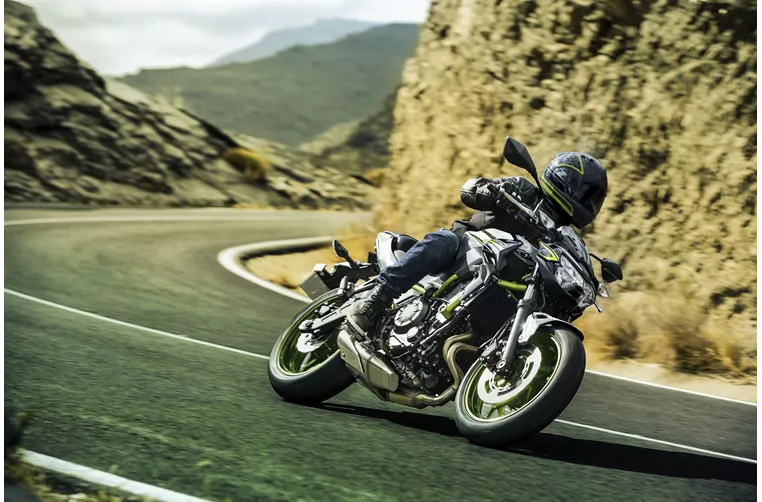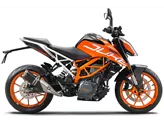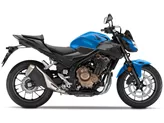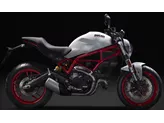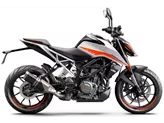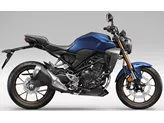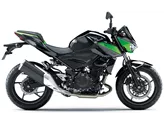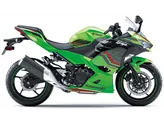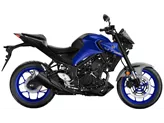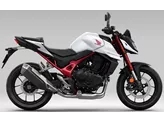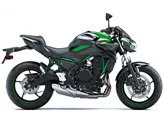Kawasaki Z 400 2023 vs. Kawasaki Z650 2021
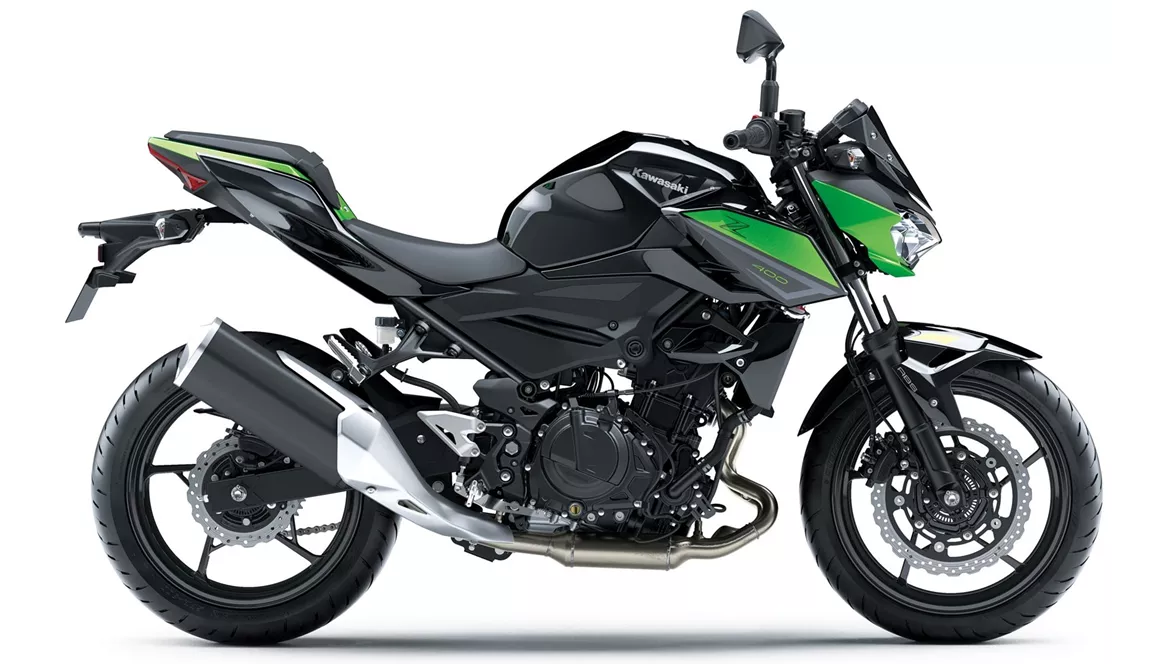
Kawasaki Z 400 2023
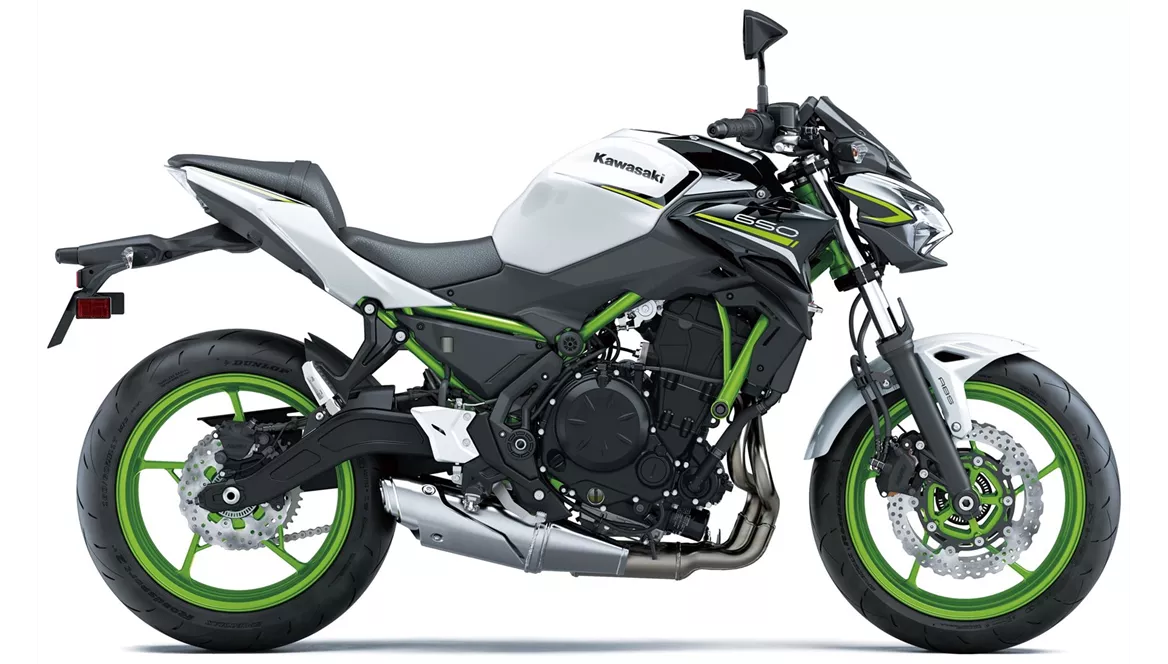
Kawasaki Z650 2021
Overview - Kawasaki Z 400 2023 vs Kawasaki Z650 2021
The Kawasaki Z 400 2023 and the Kawasaki Z650 2021 are both naked bikes with similar engine types, inline engines. However, there are several differences between the two models.
In terms of engine power, the Kawasaki Z 400 2023 has a lower output with 45 HP, while the Kawasaki Z650 2021 offers a higher power of 68.2 HP. The torque is also higher in the Z650, with 65.7 Nm compared to the Z400's 37 Nm. This means that the Z650 will likely have better acceleration and overall performance.
Both bikes have a fuel injection system and liquid cooling, ensuring efficient fuel delivery and temperature regulation. They also have the same number of cylinders, two, which contributes to their smooth operation.
The suspension systems on both models consist of a telescopic fork at the front and a swing arm with a monoshock at the rear. The rear suspension on both bikes is adjustable for preload, allowing riders to customize the ride to their preferences. This ensures a comfortable and stable ride on various road conditions.
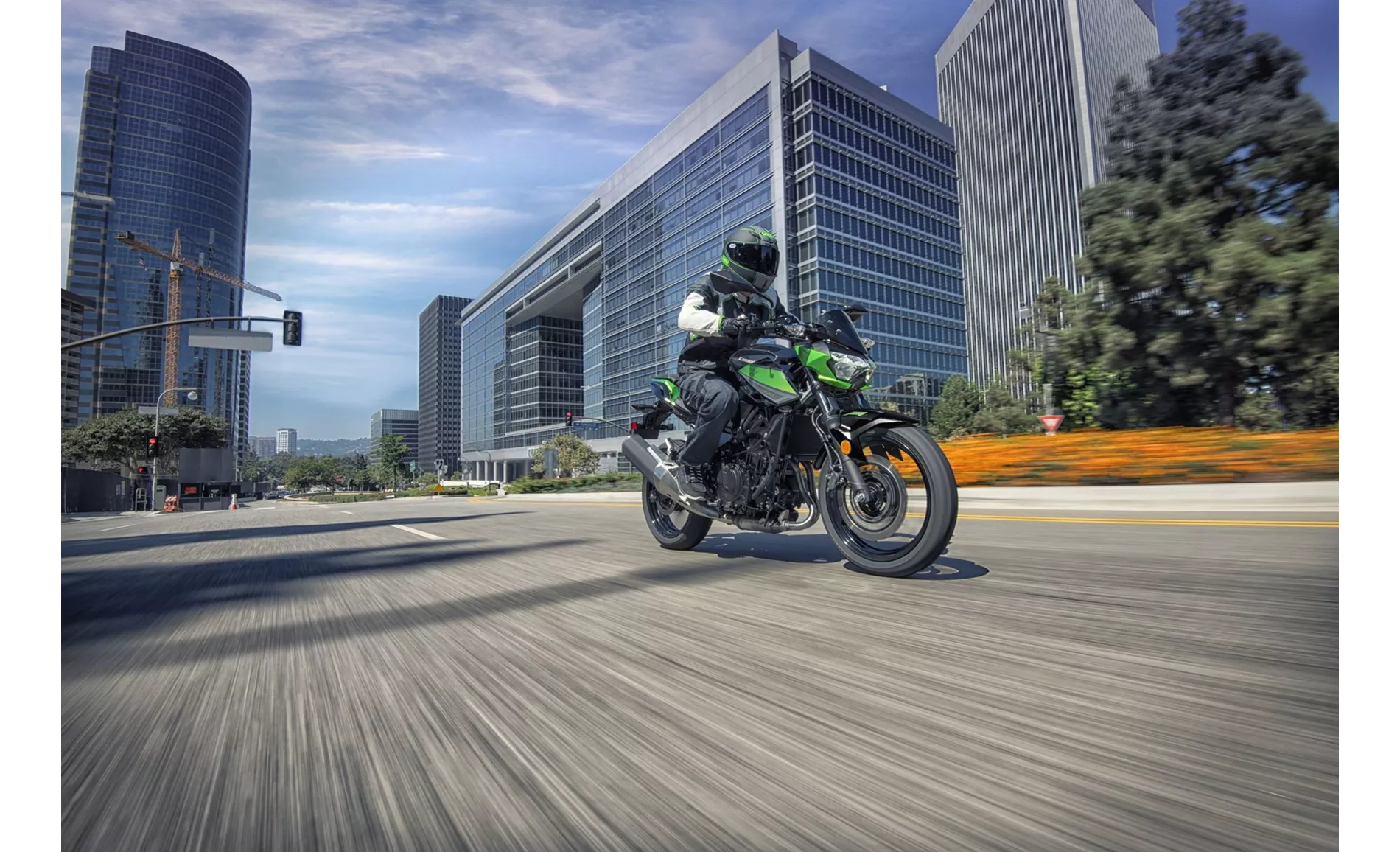
Kawasaki Z 400 2023
In terms of the chassis, both bikes feature a steel frame with a tubular design. This provides strength and rigidity, contributing to the bikes' stability and handling.
The braking systems differ slightly between the two models. The Kawasaki Z 400 2023 has a single disc brake at the front with a diameter of 310 mm and a double-piston caliper. On the other hand, the Kawasaki Z650 2021 has double disc brakes at the front with a slightly smaller diameter of 300 mm. Both bikes utilize petal technology, which improves heat dissipation and reduces brake fade.
Both models are equipped with ABS, an advanced rider assistance system that enhances safety by preventing wheel lock-up during braking.
In terms of dimensions, the Kawasaki Z650 2021 has slightly larger front and rear tire widths compared to the Z400. The Z650 also has a longer wheelbase, which may contribute to better stability at higher speeds. However, the seat height is slightly higher on the Z650, which may make it less comfortable for taller riders.
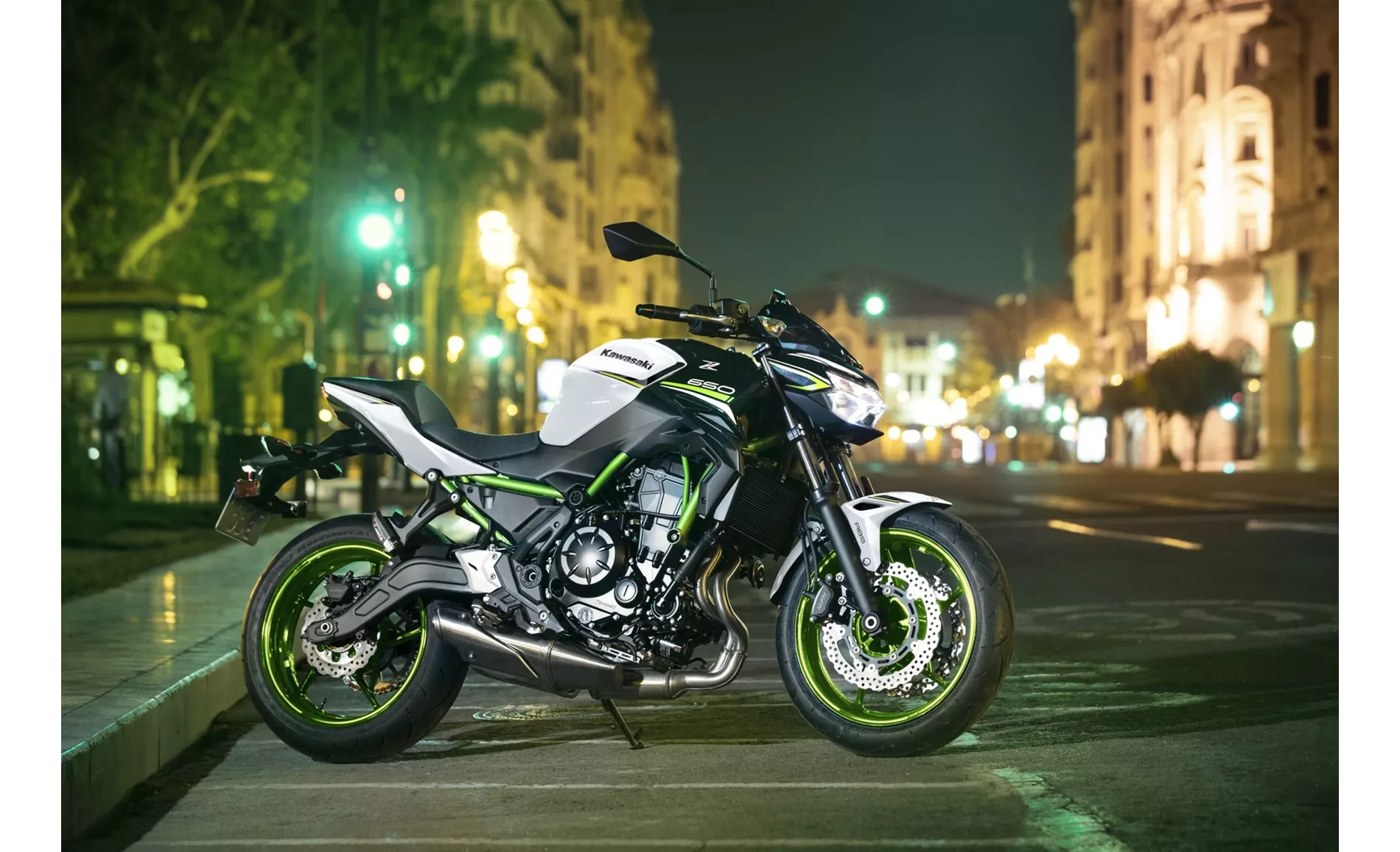
Kawasaki Z650 2021
The weight of the bikes also differs, with the Kawasaki Z650 2021 being slightly heavier at 187.1 kg compared to the Z400's weight of 167 kg (both weights include ABS). The fuel tank capacity is also slightly larger on the Z650, with 15 liters compared to the Z400's 14 liters.
In terms of strengths, the Kawasaki Z 400 2023 has a lively engine, good chassis and brakes, easy handling, a grown-up look, and high-quality workmanship. On the other hand, the Kawasaki Z650 2021 is praised for its accessible two-cylinder engine, compact dimensions, low seat height, stable chassis, TFT display with connectivity, and grown-up look.
As for weaknesses, the Kawasaki Z 400 2023 has non-adjustable levers, which may limit customization options for some riders. The Kawasaki Z650 2021, on the other hand, may be uncomfortable for taller riders and may have a lower adrenaline level in the saddle compared to its competition.
Overall, the Kawasaki Z650 2021 offers more power and slightly better specifications in terms of braking and dimensions. However, the Kawasaki Z 400 2023 still provides a lively and enjoyable riding experience with its lower weight and high-quality construction. Ultimately, the choice between the two models will depend on the rider's preferences and priorities.
Technical Specifications Kawasaki Z 400 2023 compared to Kawasaki Z650 2021
Pros and Cons in comparison
Pros and Cons in comparison
Kawasaki Z 400 2023
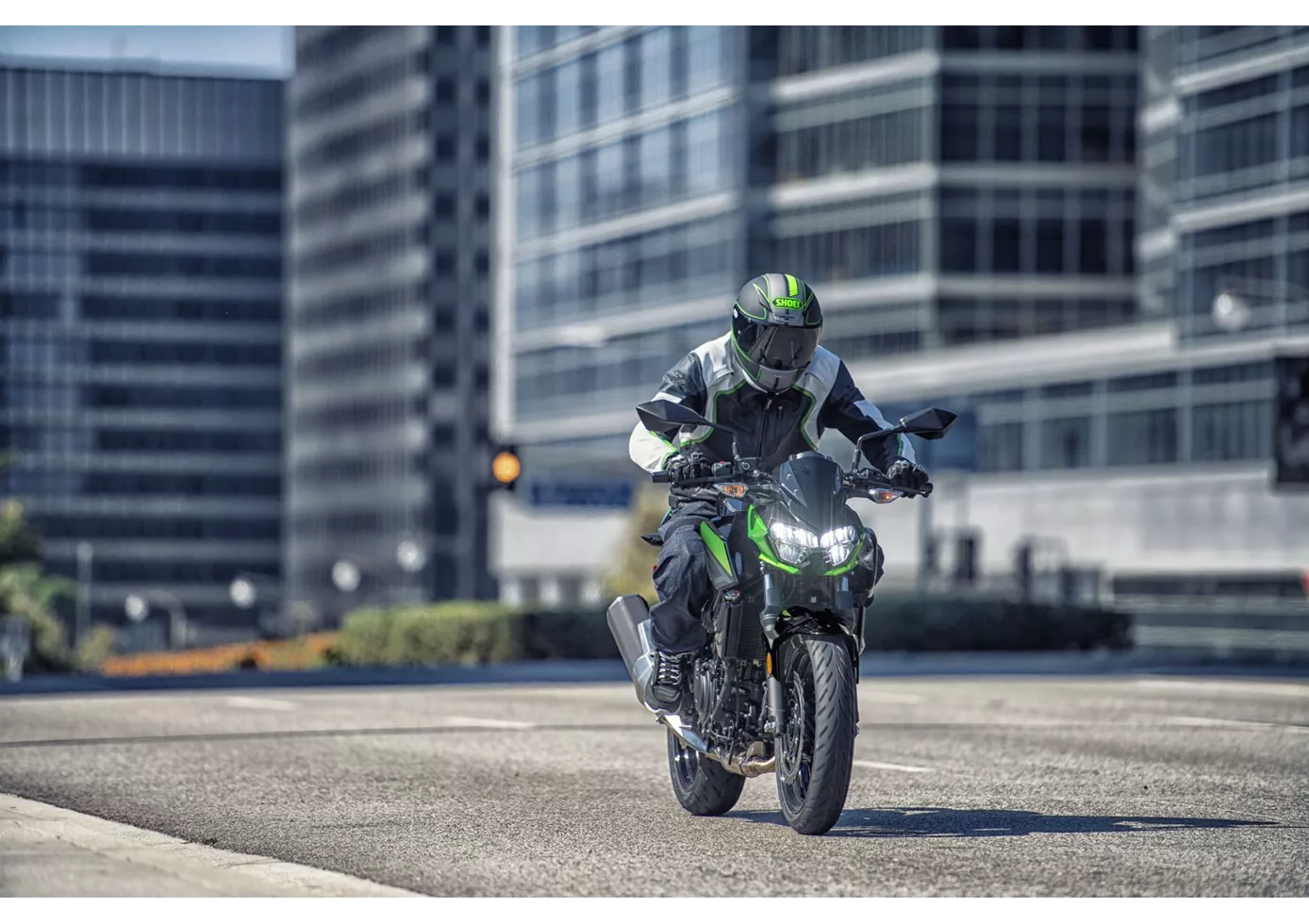
A cool and sensible entry into the A2 class. The Kawasaki Z400 scores points all along the line with its instinctive handling and the in-line two-cylinder, which convinces with good response and sufficient power. You can't go wrong with this naked bike and you can overlook the fact that the levers are not adjustable - after all, costs have to be saved somewhere.
Kawasaki Z650 2021
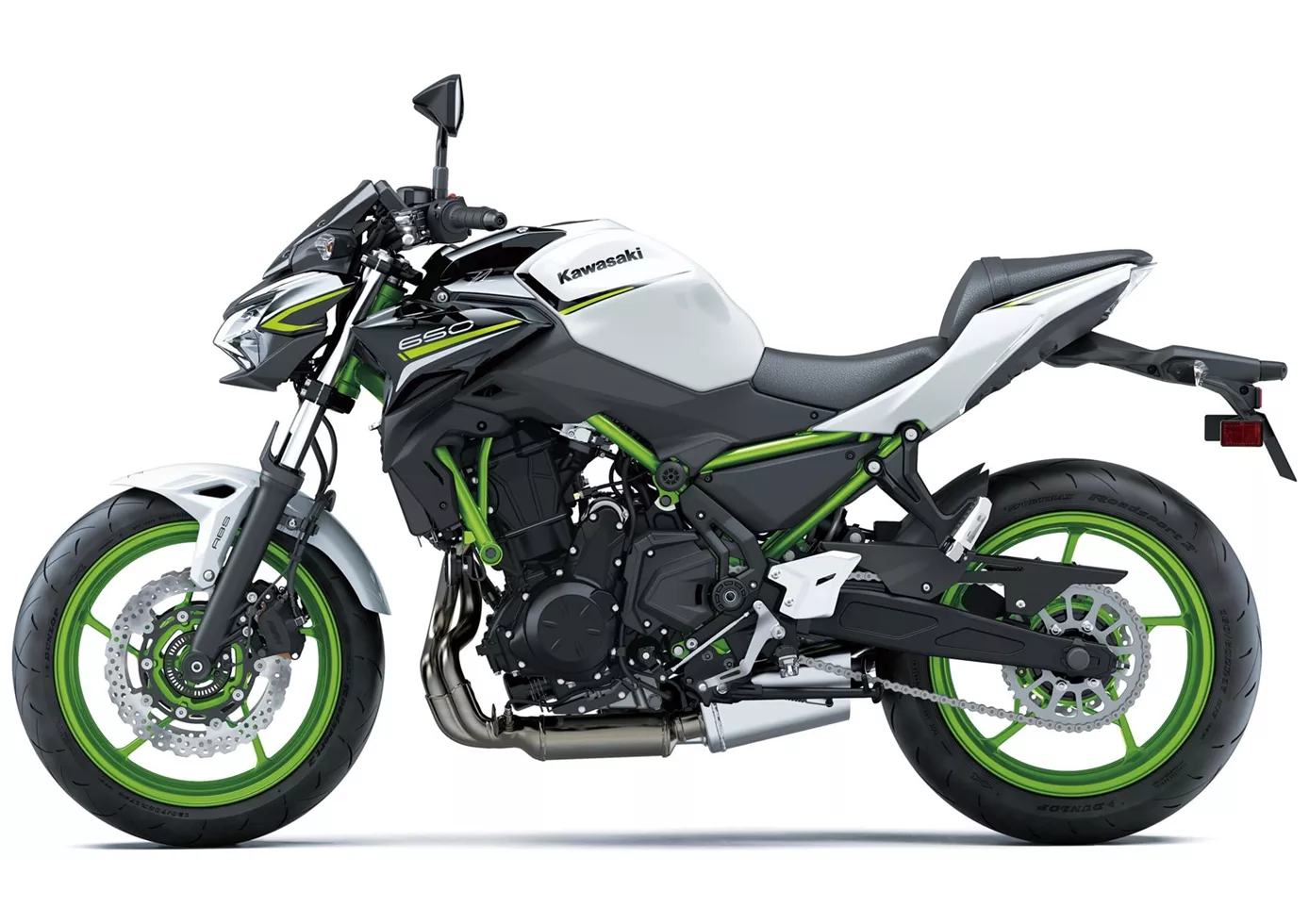
Even in 2021, the Kawasaki Z 650 stands for easy riding with great looks and good equipment. Both seat height and engine are very accessible and will give both experienced riders and newcomers a lot of pleasure. If you are looking for an honest naked bike without any big surprises, this is the bike for you. Due to its compact dimensions, however, you should try it out before buying and perhaps go for the raised seat.
Price Comparison Avarage Market Price Kawasaki Z 400 vs Kawasaki Z650
There are a few key differences between a Kawasaki Z 400 2023 and a Kawasaki Z650 2021. In terms of price, the actual average price of a Kawasaki Z650 2021 is about 14% higher. Compared to Kawasaki Z650 2021 there are more Kawasaki Z 400 2023 bikes available on the 1000PS.de Marketplace, specifically 89 compared to 25. It takes less time to sell a Kawasaki Z650 with 106 days compared to 123 days for the Kawasaki Z 400. Since model year 2019 1000PS.de editors have written 8 reviews for the Kawasaki Z 400 and 31 reviews for the Kawasaki Z650 since model year 2017. The first review for the Kawasaki Z 400 was published on 10/2/2018 and now has more than 23,200 views. This compares to more than 25,000 views for the first review on Kawasaki Z650 published on 11/8/2016.

